Media | Articles
Vellum Venom Vignette: The 1965 Mustang’s “Interior” Motives
April 17 marked sixty years since the Ford Mustang’s public debut at the 1964 New York World’s Fair. The original pony car immediately became a pop-culture and automotive phenom, and it remains one of the most impactful cars in history. We’re celebrating with stories of the events surrounding the Mustang’s launch, the history of the early cars, and tales from owners. Click here to follow along with our multi-week 60 Years of Mustang coverage. -Ed.
We know how big of a splash the 1965 Ford Mustang made upon its introduction, from its debut at the New York World’s Fair to 22,000 units sold in its first day on the market. The Mustang created the formula for the pony car genre, offering the classic long hood, short deck proportioning of a grand touring car from Europe for the approachable asking price of $2368.00. The base models weren’t outstanding performers, and that’s why many of us know the options that made this pony a real sweetheart.
There were V-8 engines, four-speed manual transmissions, a special handling package, and preferred equipment groupings like the “GT Equipment Group” that added the right amount of flash to go with that hardware. But the Mustang’s interior has an interesting story to tell, one that you likely haven’t heard yet.
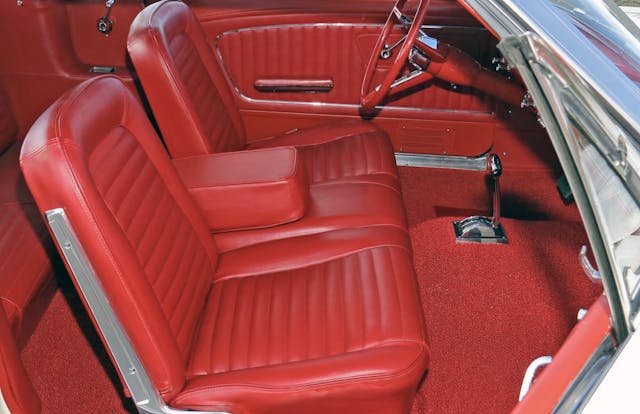

This first “pony” car was accessible to many drivers, and its style was crucial to the vehicle’s success. Credit some of the Mustang’s instant popularity with its ability to provide more rungs on its ladder, appealing to Ford Falcon buyers and well-heeled shoppers alike. Going upscale with unique sheetmetal and structural underpinnings is difficult, but the move is quite easy to accomplish with interior trappings. Take the optional floor console, from the Mustang’s extensive options list.
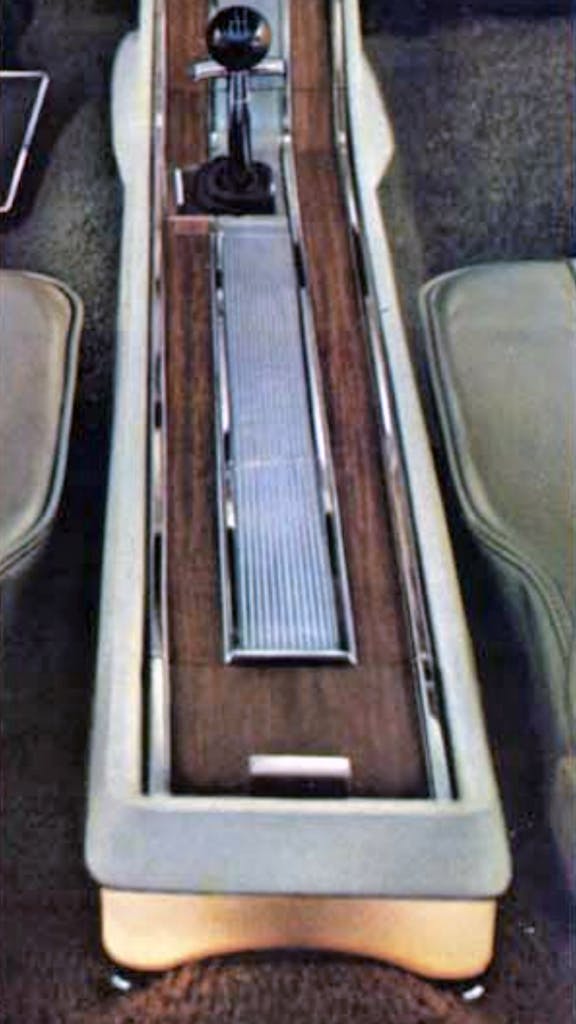
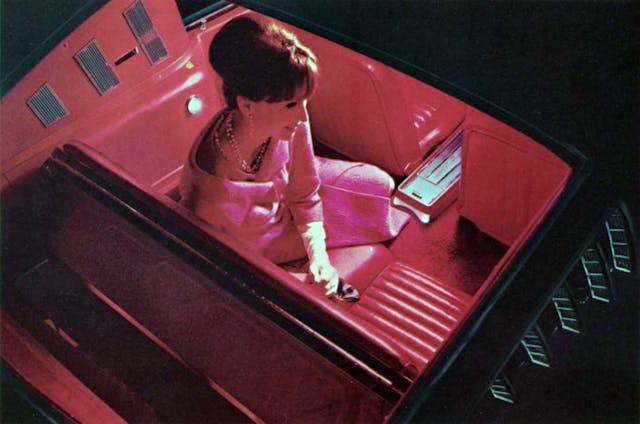
Nobody needs a console, but Mustang owners with bucket seats had an opportunity to add more storage, an ashtray for rear seat occupants, and a ton of flash in a space normally reserved for a carpeted driveshaft tunnel.
Marketplace
Buy and sell classics with confidence
For a reasonable(ish) $51.50, this courtesy-light-equipped console gives the affordable pony car a sense of luxury in the Thunderbird tradition. Just look at how it integrates the offset floor shifter while complementing the dash’s chrome accents. But the coolest feature is the “edgeless” rear courtesy light, and how it interfaces with the carpet on the transmission tunnel. It’s like sitting in an infinity pool that merges concrete ground with a stunning backdrop with water as its visual glue. (Or light, in the case of the Mustang.)
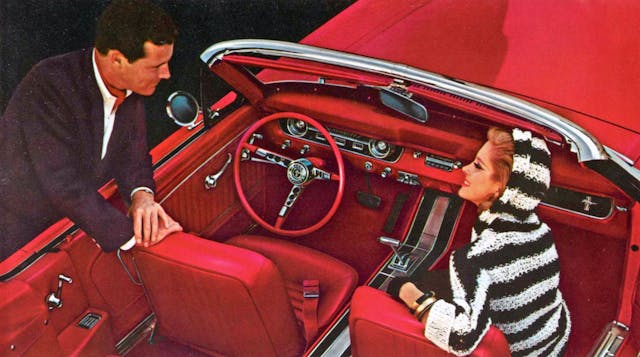
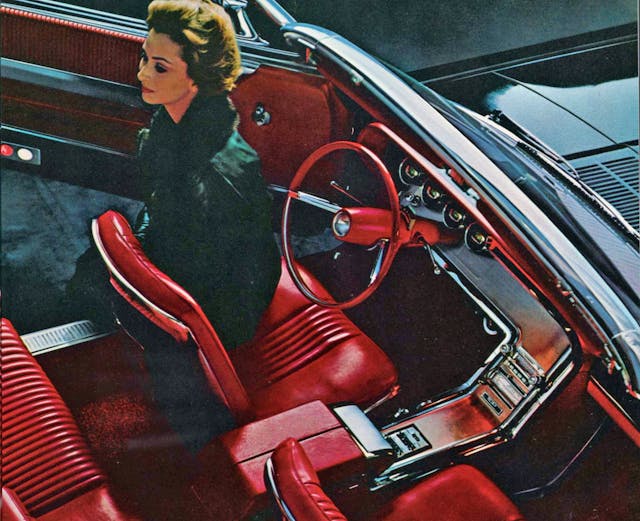
Making the Mustang’s interior look like that of a Thunderbird—a vehicle that was twice the asking price of the Mustang—is an impressive transformation for the equivalent of $506.33 in today’s dollars. But we haven’t covered (as it were) the optional wood veneer for these consoles, as that’s where our story kicks into high gear.
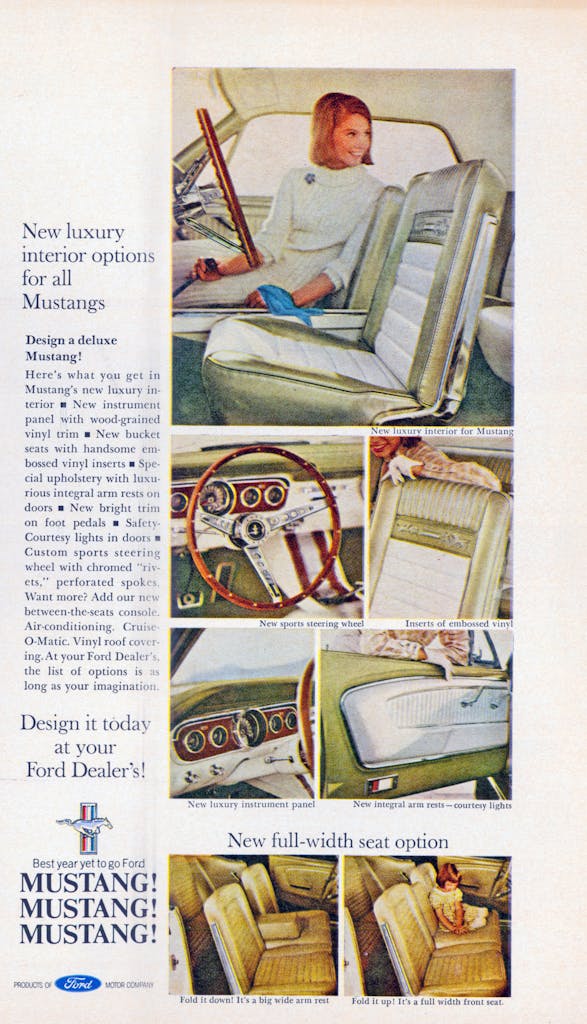
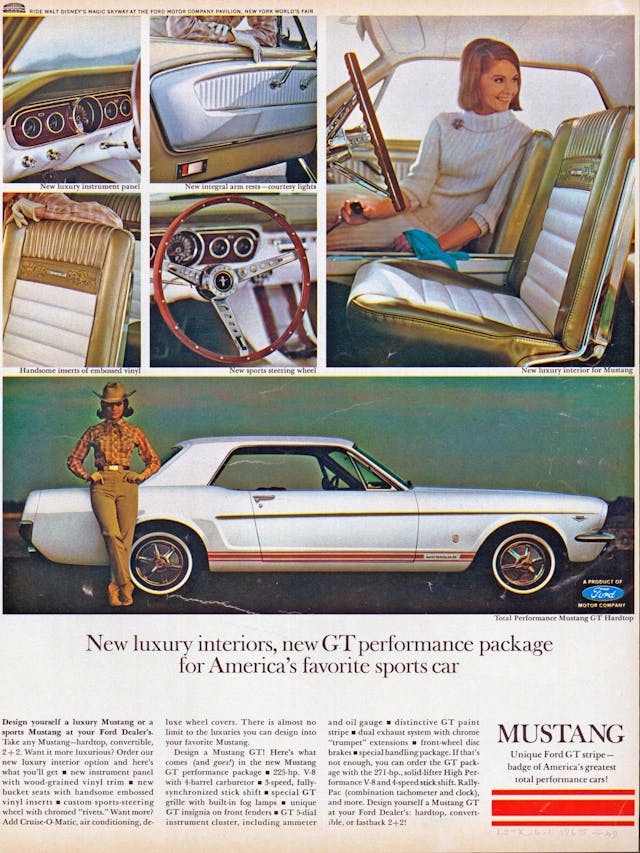
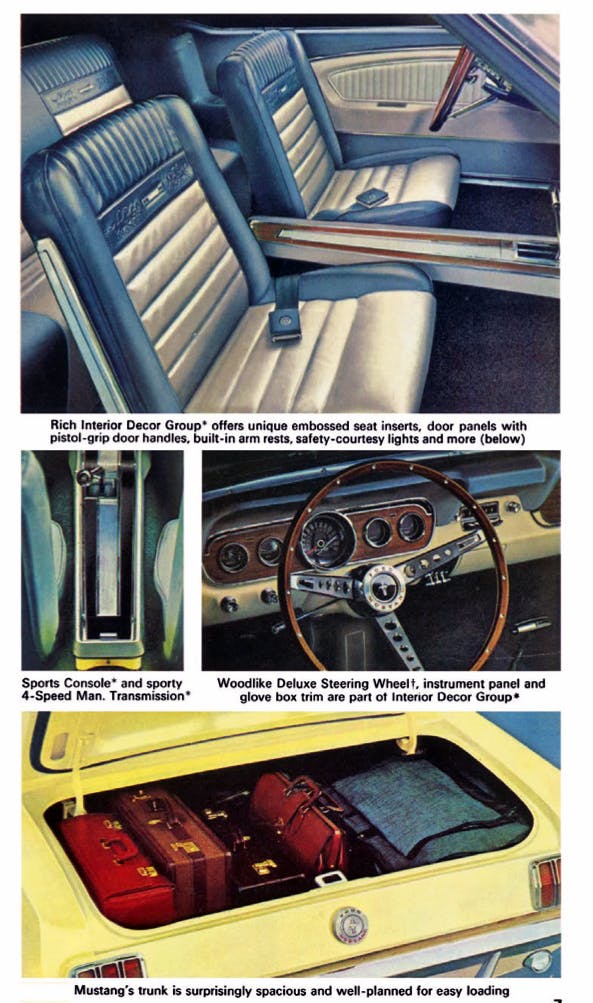
While Ford referred to it as the “Interior Decor Group,” the upgrade presented above is colloquially referred to as the Pony Package. The name comes from the horses embossed on the package’s uniquely crafted two-toned seats. While the console was a standalone option, the simulated wood trim on the Pony Package’s console was designed to blend with the wood-effect bits on the steering wheel and dashboard.
Unique door panel inserts with Thunderbird-style handles and courtesy lights were also part of the deal, as was the Mustang GT’s fancy gauge package. Unique kick- and quarter-panel covers with carpet/vinyl coverings and stainless steel trimmings rounded out the Pony Package’s preferred equipment. This is a fair bit of equipment at any price, for any vehicle.

While the Pony Package was a not insignificant $107 hit to your wallet, that $1051.98 spent today can’t even buy the blackout wheels/trim/spoiler combo in the 2024 Mustang’s Night Pony Package. Is black paint and plastic really worth more than all this wood, chrome, ornate trim, and pressed-on ponies?
Very few interior upgrades for a modern Ford can match the bang for the buck of the Pony Package; A Mustang so equipped is more akin to a Black Label Lincoln Continental. The original Mustang might not be crafted like a Jaguar of the era, but that didn’t stop around 27,000 customers (out of 559,451) from choosing this upscale splash of style back in 1965. Clearly, there was a market for a premium Pony Car, and the Mustang’s future competition was foaming at the mouth for a piece of that action.


The Pony Package’s attainable luxury offerings were also part of Pontiac and Mercury’s plan for their pony cars, as those upscale brands traditionally offered more than a mere Ford. Take the Jaguar-esque Cougar XR-7 for 1967, a vehicle which took the now-defunct Pony Package’s game to the next level with extra functionality (more lights and switches), acres of faux burl trim, and decadent leather seating surfaces.
So, consider the oft-overlooked Pony Package to have an enduring legacy on par with that of the Mustang GT: the package had an impact far beyond its two-year lifespan as a factory interior upgrade. This option package gave the masses a shot at personal luxury before the genre even existed, giving the pony-car class an even broader appeal.
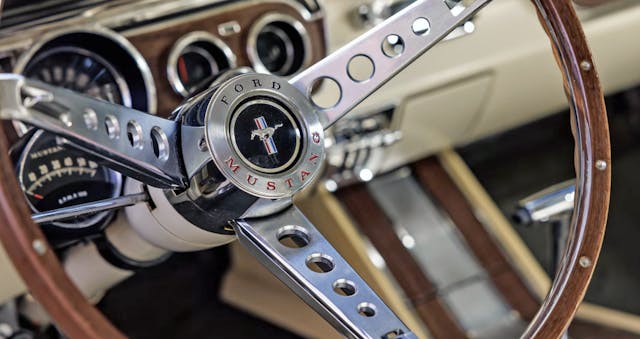
Back in 1965, you could get a mere car for $2368.00, or you could have a Mustang. You could also spend $4500 to $6000 for sleek two-doors like a Thunderbird or a Jaguar XKE, or you could have the nicest Mustang in town and save a ton of cash to go with all that flash. (I’d recommend purchasing some of those wild Eames Chairs and a HiFi system for your living room with that extra scratch.)
The purchase scenarios above are brilliant moves at market segmentation, and the Pony Interior shows how important enlightened interior design can be for an entire class of car.
***
Check out the Hagerty Media homepage so you don’t miss a single story, or better yet, bookmark it. To get our best stories delivered right to your inbox, subscribe to our newsletters.

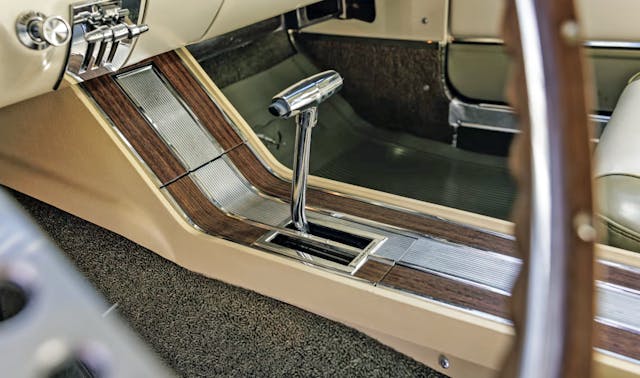
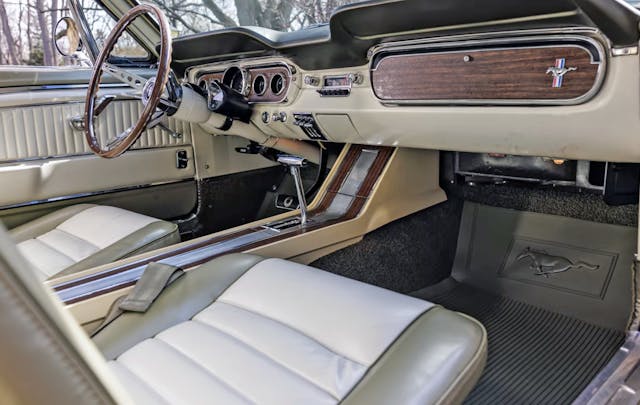

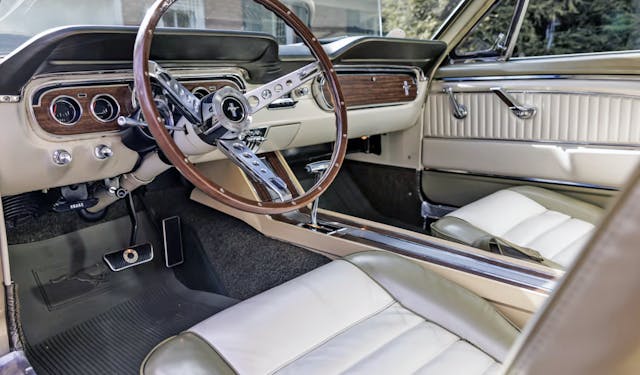
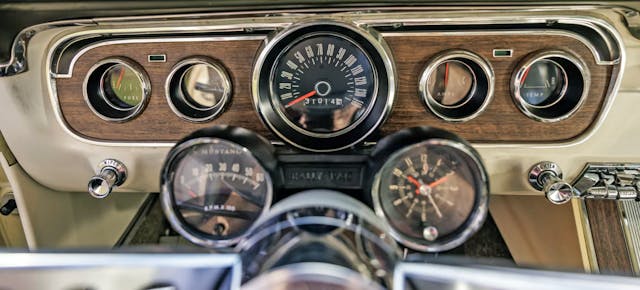
















I wish Ford would offer a modern day “Interior decor group” to improve the base interiors. While the current model is (barely) acceptable, the 2005- generation was a nightmare of hard plastics.
Come on, I’d pony up (see what I did there? :)) some extra cash for better door panels, interior quarter window surrounds, and two tone seats.
Agreed 100%, considering how the Mustang is the “last Pony Car standing” I bet it would make more money for Ford with a few interior upgrades like the Pony. I mean, it seems to work for modern day Minis.
While it is the only car standing it is not in good shape, The Mustang sells just a fraction of what it used to sell and it is already expensive enough.
While adding more interior options would be nice it is just not economically sound move right now.
Whikle we get more power and other things. Cost have driven us to limited color and fabric optiosn anymore.
Not just the Mustang but it is amazing how many little things could be done from the factory to customize or improve the car to the customers tastes versus todays one size fits all packages we do today which don’t change things nearly as much. The beauty of this car is all the little things and how they add up to a good experience.
Speaking of market segmentation, my Dad was a Ford guy and in the market for a second family car. It was 1964 and the world was going crazy over the Mustang. He really liked it but instead purchased a 64 Mercury Comet convertible with the Caliente styling package. The bottom line was a lot less than an equivalent Mustang. It had the “wood” trim and the upgraded seats that were nicer than the Pony option. I think only about 1000 of Caliente convertibles were made that year.